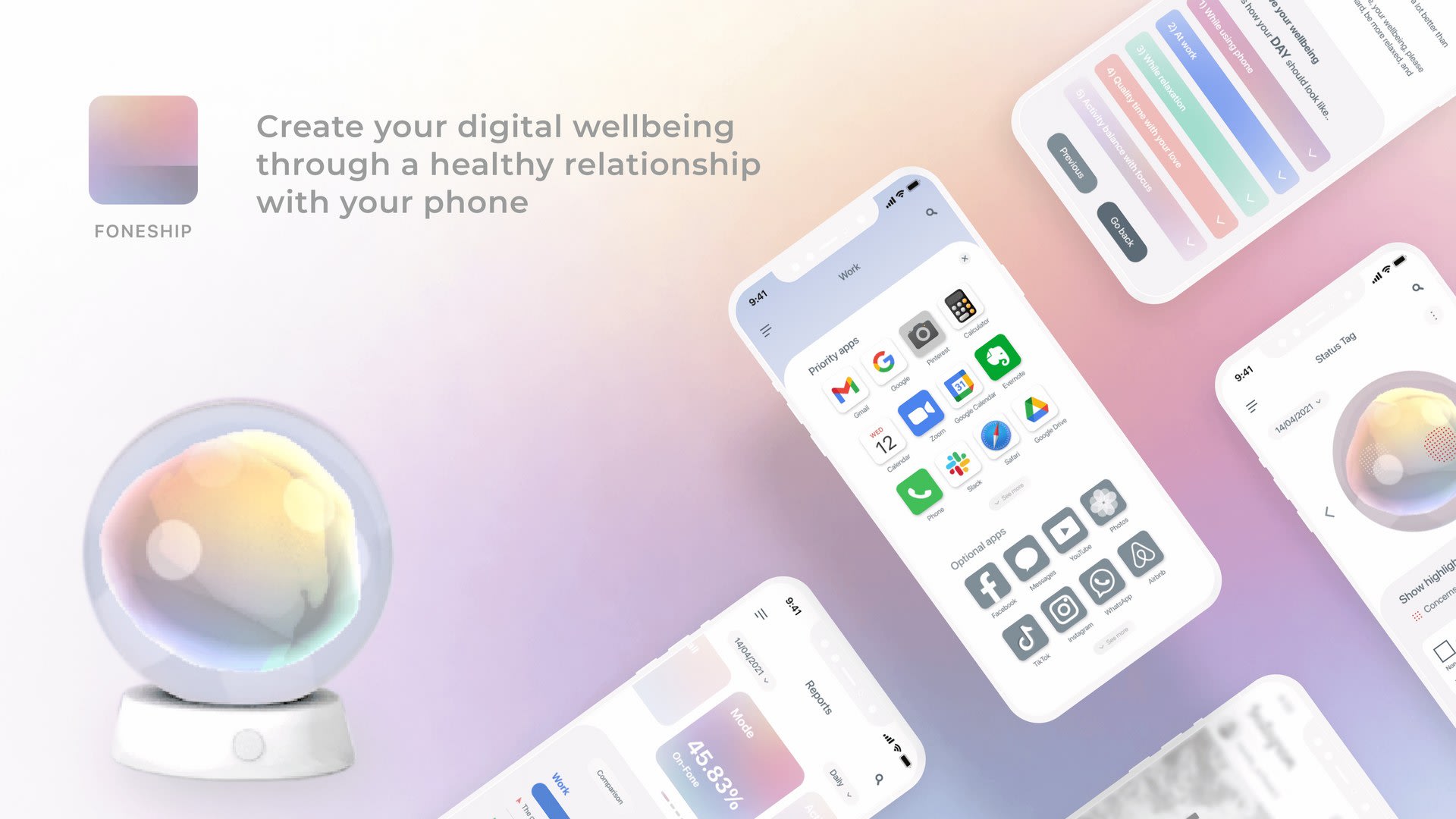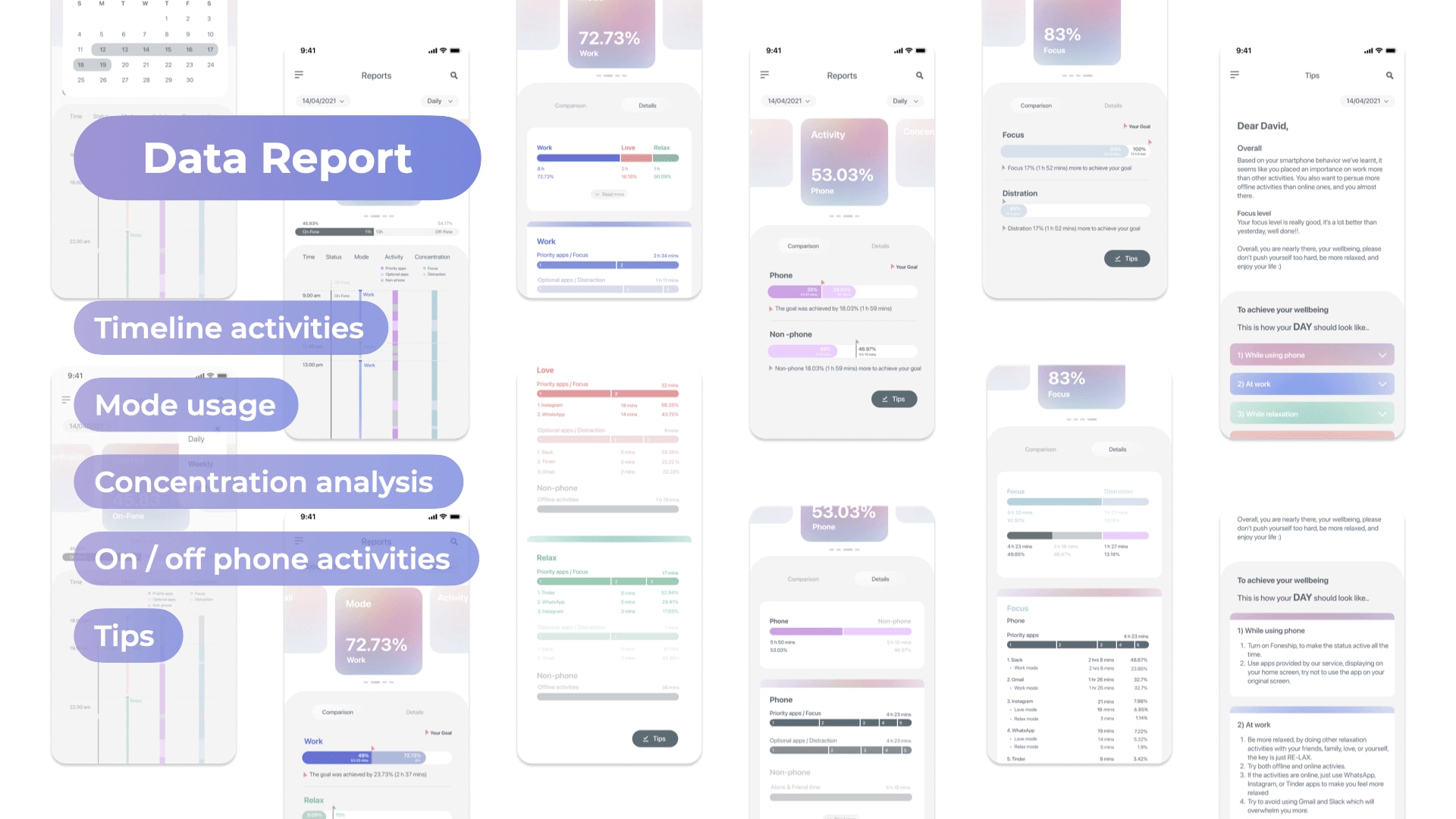Foneship is a service focusing on ‘Relationship’ and ‘Phone’. It is a self-help tool for smartphone users to build a healthier relationship with their smartphones to ultimately achieve their personal digital wellbeing.
Nattanun Sainont


Hi, I'm Nattanun, you can call me shortly.. Parn :)
I’m a Product & Service Designer believing in a blend of creative and critical thinking as life pursuits. Artistic curiosity drives me to excel in diverse fields varied from the conceptual areas to the logical disciplines. Multidimensional aspects become my everyday playground with no boundaries or end in learning.
And this is how my journey begins.. I started my career path as a (Wearable) Product Designer - in other words, a Jewelry Designer. During this time I navigated through several concept-based designs. Without any jewelry background and rationale, industrial design knowledge is the only asset to apply to the new field. However, I found that the design metaphor could keep the beautiful identity of creativity alive and could help better support design thinking and practice as well. Along the way of experiential knowledge and first-hand experience, the involvement of users does primarily exist. Without the real understanding of users, design means nothing so that I decided to step into a new and challenging world as a Service Designer.
From my point of view, Service Design is a holistic approach to the perfect combination of people, business, and technology with the objective of identifying an unmet need, addressing the underlying problems, and enhancing the experience where the opportunities exist. Furthermore, Service Design is a new territory where I could develop skills in research and also help foster the capability of project management. As a result, this has shaped my thought and kept me on a right track, but still not to limit creativity so far. I, therefore, have been free from wandering around aimlessly. Instead, it has enabled me to set a meaningful goal to satisfy user’s needs and fully adopt logical reasoning, critical and creative thinking altogether.
Now.. my journey has not been complete yet. I continue this journey to further discover the right balance between the conceptual area and the logical discipline to find my secret sauce with the hope that this could bring the impact and more engaging integrated outcomes to life.
Nomophobia - a fear of being away from the phone - has become a universal truth affecting people at all ages since it has permeated every single aspect of our lives. Most of us have been experiencing a moment living with our phones from the beginning to the end of a day. This endless social phenomenon is going from strength to strength, especially in the Covid-19 situation that could lead to a more dependency on phones. However, smartphones undoubtedly bring a great benefit to our lives, but also come with the undeniable drawback of suffering from excessive use such as sleep deficit, anxiety, stress, and depression. Before these problems of physical and mental health have been exacerbated, now it’s time to find a healthy balance of a relationship with a phone that could prove to be the right wellbeing for you.



We conducted several workshops with end-users and professionals to improve our service. During 3 rounds of prototyping, we proved some ideas and also removed some parts according to users' feedback and technical feasibility. Also, we found that greyscale could help users feel less interested in their screens. To ensure an effective idea of greyscale, we used some metaphors such as paper alarms for the validation. The participants like the grayscale screen since without the color they totally lose their interest and also find the provocative text helpful to help reconsider the usage of smartphones. After all, this is how our final service, Foneship, comes in.
Foneship is a self-help tool to help users build their digital wellbeing with their phones through only 4 steps – register, onboard, use, get a report and tips. Users need to register when they first access Foneship. Then onboarding will help them set up their preferences and wellbeing goals with two options as a facilitator. For users who are not clear with their goal, they can take a short survey covering their habits and desire. For those who are clear, they can set it up manually. Foneship will then automatically create modes and relative apps according to the survey and users’ previous screen time report. These apps are divided into priority apps standing for users’ priority tasks and optional apps meaning apps of distraction under a certain mode. Users only need to go through registration and onboard, then they could continuously use our service, get reports and tips.





![[untitled]](https://res.cloudinary.com/rca2020/image/upload/f_auto,h_1080,w_1920,c_fill,g_auto,q_auto/v1/rca2021/60c3727ca98c7847e5ed21ff-436993?_a=AXAH4S10)